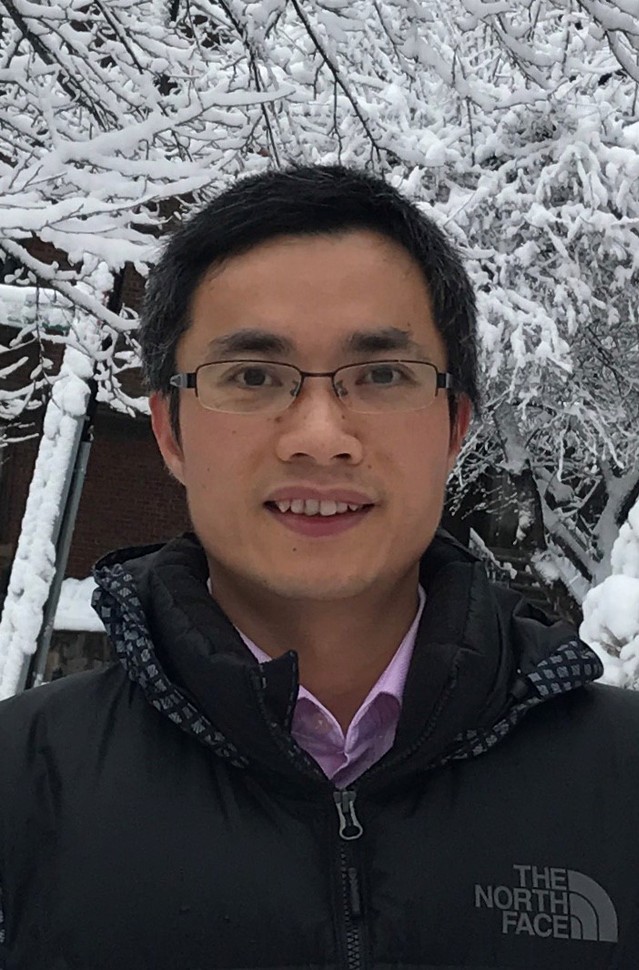Jialiang HUANG, Ph.D.

Professor
E-mail: jhuang@xmu.edu.cn
Education
2005, B.Sc., Fuzhou University
2008, M.Sc., Fuzhou University
2012, Ph.D., Chinese Academy of Science
Professional Experience
2011-2013, Scientist, GlaxoSmithKline (China) R&D Co., Ltd., Shanghai
2013-2018, Postdoc, Dana-Farber Cancer Institute/Boston Children's Hospital, Harvard Medical School
2018-present, Principal Investigator, School of Life Sciences, Xiamen University
Research Area
We are interest in understanding the epigenetic regulation mechanisms of development and cancer using computational (dry) and experimental (wet) methods. Our current research includes: (1) developing computational methods for quantification problems for various omics data, such as scRNA-seq, HiC, ATAC-seq and ChIP-seq; (2) integrating genomic, transcriptomic, and epigenomic data to elucidate the gene regulatory networks and for blood development; (3) using single-cell analysis and epigenetic approaches to investigate the cellular heterogeneity and gene regulatory mechanisms associated with cancer progression and treatment response, which helps to identify potential drug targets.

Selected Publications
1. J. Huang#, K. Li#, W. Cai, X. Liu, Y. Zhang, S. H. Orkin, J. Xu, G.-C. Yuan. Dissecting super-enhancer hierarchy based on chromatin interactions. Nat Commun, 9: 943, 2018. (#Equal contribution)
2. E. Marco#, W. Meuleman#, J. Huang#, K. Glass, L. Pinello, J. Wang, M. Kellis, G.-C. Yuan. Multi-scale chromatin state annotation using a hierarchical hidden Markov model. Nat Commun, 8: 15011, 2017.
3. J. Huang#, X. Liu#, D. Li#, Z. Shao#, H. Cao, Y. Zhang, E. Trompouki, T. V. Bowman, L. I. Zon, G.-C. Yuan, S. H. Orkin, J. Xu. Dynamic control of enhancer repertoires drives lineage and stage-specific transcription during hematopoiesis. Dev Cell, 36: 9-23, 2016.
4. J. Huang, E. Marco, L. Pinello, G.-C. Yuan. Predicting chromatin organization using histone marks. Genome Biol, 16: 162, 2015.
5. J. Huang, C. Niu, C. D.Green, L. Yang, H. Mei, J.-D. J. Han. Systematic prediction of pharmacodynamic drug-drug interactions through protein-protein-interaction network. PLoS Comput Biol, 9: e1002998, 2013.
6. J. Huang, Y. Liu, W. Zhang, H. Yu and J.-D. J. Han. eResponseNet: a package prioritizing candidate disease genes through cellular pathways. Bioinformatics, 27: 2319-2320, 2011.
7. H. Xie, C. Peng, J. Huang, B. Li, W. Kim, E. Smith, Y. Fujiwara, J. Qi, G. Cheloni, P. P. Das, M. Nguyen, S. Li, J. E. Bradner, S. H. Orkin. Chronic myelogenous leukemia initiating cells require Polycomb group protein EZH2. Cancer Discov, 6: 1237-1247, 2016.
8. J. Xu#, Z. Shao#, D. Li, H. Xie, W. Kim, J. Huang, J. E. Taylor, L. Pinello, K. Glass, J. D. Jaffe, G.-C. Yuan, S. H. Orkin. Developmental control of polycomb subunit composition by GATA factors mediates a switch to non-canonical functions. Mol Cell, 57: 304-316, 2015.
9. S. Beyaz#, J. Kim#, L. Pinello#, Y. Hu, M. A. Kerenyi, P. P. Das, R. A. Barnitz, M. E. Xifaras, R. Dogum, J. Huang, W. N. Haining, O. Yilmaz, G.-C. Yuan, S. H. Orkin*, F. Winau*. The histone demethylase UTX regulates the lineage-specific epigenetic program of invariant natural killer T cells. Nature Immunology. 2017; 18, 184-195.